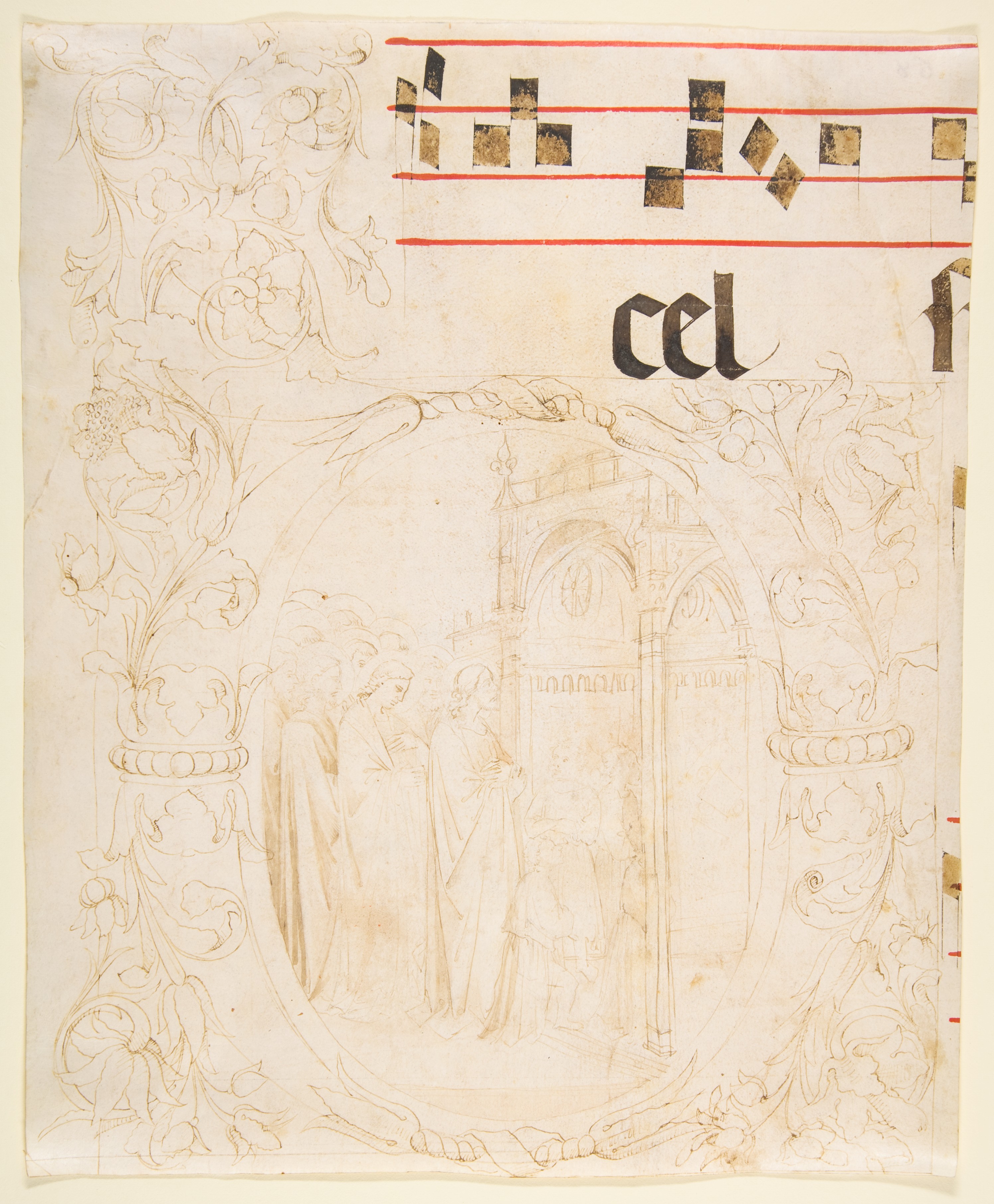Javascript must be enabled to continue!
Decorated Initial with Scene of Christ Entering the Temple.
View through The Met
Pen and pale grayish brown ink brush and pale grayish brown wash (figural scene) pen and pale brown ink over construction in leadpoint ruling and compass work (ornamental parts) ruled lines in red ink notes and words in pen and dark brown ink (musical score) on vellum
Drawings and Prints, Metropolitan Museum of Art New York NY, Purchase Lila Acheson Wallace Gift 1999
Title: Decorated Initial with Scene of Christ Entering the Temple.
Description:
Pen and pale grayish brown ink brush and pale grayish brown wash (figural scene) pen and pale brown ink over construction in leadpoint ruling and compass work (ornamental parts) ruled lines in red ink notes and words in pen and dark brown ink (musical score) on vellum.
Related Results
Christ with the Cross
Christ with the Cross
Christ holding the cross was a motif that El Greco derived from the narrative of Christ’s Passion, creating an isolated image that seems to have been extremely popular with his cli...
Breechcloth
Breechcloth
Breechcloth; probably Yanktonai; 1860-1870Wool, porcupine quills, sinew, metal, horsehair, pigments; 117.5 x 28.5 cm.\RMV 710-9; Herman F.C. ten Kate collection; purchased from tra...
Neck Amphora (storage jar): Herakles and Erymanthian Boar; Warrior Farewell Scene
Neck Amphora (storage jar): Herakles and Erymanthian Boar; Warrior Farewell Scene
On one side: Herakles capturing the Erymanthian boar. The Erymanthian boar was a monster which plagued the central Peloponnese around Mt. Erymanthos, and it was one of Herakles’ la...
Brisé fan of paste board covered with silk, decorated with straw appliqué work, probably made in Florence, 1620s. Brisé fan of seven sticks, each one shaped to represent a curled feather. Cut straw, applied to silk covered cardboard. The sticks are made o
Brisé fan of paste board covered with silk, decorated with straw appliqué work, probably made in Florence, 1620s. Brisé fan of seven sticks, each one shaped to represent a curled feather. Cut straw, applied to silk covered cardboard. The sticks are made o
Brisé fan of paste board covered with silk, decorated with straw appliqué work, probably made in Florence, 1620s. Brisé fan of seven sticks, each one shaped to represent a curled f...
Kashmir. Temple of Marttand or the Sun. Niche in the
interior - female figure probably representing one of the Sun's
wives, 'the Moon in conjunction,' 'Intellect,' or
Brightness.'
Kashmir. Temple of Marttand or the Sun. Niche in the
interior - female figure probably representing one of the Sun's
wives, 'the Moon in conjunction,' 'Intellect,' or
Brightness.'
Photograph of a relief-sculpture in a niche, with
a measuring scale in the foreground, in the Surya Temple at Martand
in Jammu and Kashmir, taken by John Burke in 1868. This photog...
Kashmir. Temple of Marttand or the Sun. Niche in the
interior - female figure probably representing one of the Sun's
wives, 'the Moon in conjunction,' 'Intellect,' or
'Brightness.'
Kashmir. Temple of Marttand or the Sun. Niche in the
interior - female figure probably representing one of the Sun's
wives, 'the Moon in conjunction,' 'Intellect,' or
'Brightness.'
Photograph of a sculpture of a female deity in a
niche at the Surya Temple at Martand in Jammu and Kashmir, taken by
John Burke in 1868. This photograph was reproduced in Henry Har...




